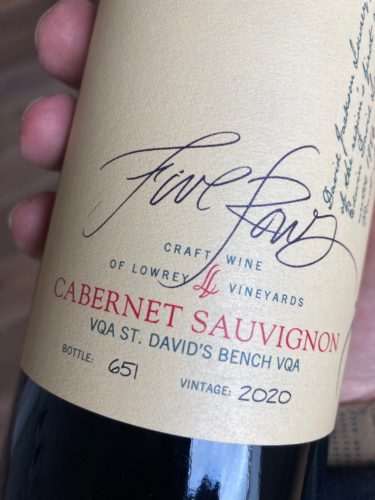2022 “Jean’s Block” Riesling
There is just something all around comfortable about Riesling. From its reliability in the vineyard to its versatility in the winery, I can’t help but get the warm and fuzzies when I think of this varietal.
Sure, there are the inevitable yearly Botrytis issues, but after facing those conditions so often it starts to become part of the routine and a subtle component of the wine.
The 2022 vintage marked the earliest harvest date we’ve ever had for this varietal – September 16th. This was mainly due to the light crop in Jean’s Block, approximately 25% of our normal yield. It is generally preferable for Riesling vines to carry a slightly higher crop load than our other aromatic white varietals, in an effort to maintain acidity through ripening. Therein lied the challenge in 2022, and we opted to harvest earlier than normal to preserve the delicate flavours and acidity (18.0 degrees Brix, 10.4 g/L TA).
I employed the usual regimen of two separate fermentation tanks, each inoculated with a different yeast strain (W15 and X5). I love the dynamic complexity that using these two yeasts provides. The X5 tank shows beautiful, intense tropical and floral aromas, while the W15 tends to have more of a traditional Riesling profile of green apple, pear and peach. Together they are fermenting bliss!
Fermentations were carried out cool (10C) for about a month until the wines tasted balanced at a specific gravity of 1.005. The tanks were then blended and allowed to bulk age until bottling on April 6th 2023. Total production was 126 cases and final alcohol was 10.5%.
The knockout aromatics of this Riesling are the real standout of this vintage. I tend to lose myself a bit while nosing this wine before the crisp natural acidity snaps me back to. This Riesling has become my go to wine for settling in to watch a Leafs playoff game after putting the kids to bed. I can’t think of anything more comfortable than that…


